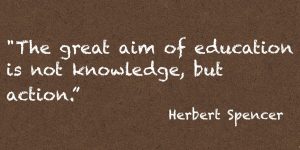For years, Laura came to our seminars, sitting in the front row, taking notes and looking earnest. And at least once during each of those seminars, she’d pigeonhole me to tell me something she didn’tlike about my presentation.
A great consumer of self-help and get-rich literature, Laura always had some shiny new idea about wealth building that she believed I should be talking about instead of the “same-old, same-old” axioms I was then and still am espousing.
One year I remember her excitement as she explained “the law of attraction” to me. Another year her big idea was networking. Still another she was all about multilevel marketing. I always listened and thanked her for her thoughts. Then I redirected the conversation by asking her how she was doing, about the progress she was making along the road to wealth.
Her response was always the same. The brilliant idea or strategy she had pitched me last year had failed to work because of some unanticipated obstacle. It was never her fault. It was bad luck or bad partners or sickness or stress or family obligations.
After six or eight years of this, I drew her attention to the elephant in the room: Maybe the problem was inside her head. Maybe all those obstacles felt insurmountable because of some subconscious reluctance to take action. Or maybe she found thinking about being rich a lot more fun than doing something about it.
Laura, it may not surprise you, did not like my hypothesis. (In fact, that was the last time she ever came to one of our seminars.)
And her story is not uncommon.
Most Americans (56%) rate wealth as “important.” For those under 30, the percentage is 10 points higher. And for lower-income and first-generation Americans, the belief in the importance of wealth is nearly 100%.
It’s human nature to want a better and/or richer life. But it’s also human nature to procrastinate – especially when the task is difficult and potentially life-changing.
Every year, millions of Americans enroll in self-improvement courses ranging from meditation to learning foreign languages to public speaking to losing weight, getting in shape, improving any one of dozens of social skills. And tens of millions read books on these subjects.
How many of them achieve their goals?
I’ve been unable to find any definitive data on that. But I can say from what I’ve seen over the years that the number is surprisingly small.
If I had to guess, I’d say that 50% never do anything more than pay for the book or program they bought. Of the 50% that start it, half don’t finish. And of the half that do finish, half of them don’t put what they learned into action.
So we are talking about 12.5% that invest in improving themselves and actually achieve the goal.
And here’s the thing. If you asked the 87.5% that never took action whythey failed to act, most wouldn’t admit the truth: that they couldn’t bring themselves to do the work.
What you would hear, though, are plenty of excuses about what was wrong with what they purchased.
I once told a well-known real estate guru how proud I was about the real estate programs my brother and I were developing. What I liked best about them, I said, was that they were designed to prompt students to take action. “We start at the very beginning. But our goal throughout is to get them to make their first purchase so they can start making money.”
“Big mistake,” he told me. “These people – they don’t want to be real estate entrepreneurs. They don’t want to be out in the world working. They want to be at home, taking courses. The best thing you can offer them after they have completed a course is another course. They’d rather pay you more money than take action.”
He wasn’t kidding. And he wasn’t wrong.
I agree with the English philosopher Herbert Spencer that “the great aim of education is not knowledge but action.” But there’s just so much a teacher can do…

